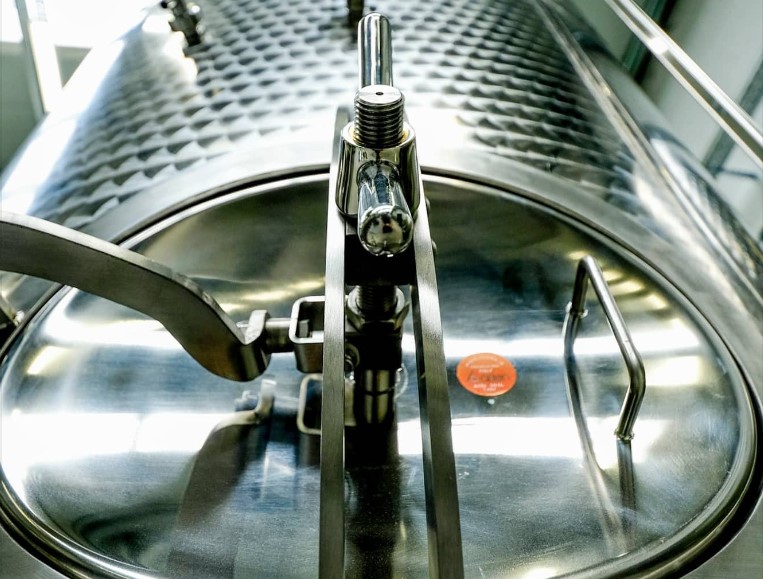Allowing wine to undergo maturation is a crucial step, leading to a clarified liquid and facilitating the integration of various wine components. This transformative process stabilizes the wine’s color, unlocks its aromatic potential, and results in a harmonious and balanced final product. Maturation methods vary, with some wines benefiting from vats, especially those intended for immediate consumption, while others thrive in the complexity offered by oak barrels, which introduce unique qualities to the final blend.

Choosing Between Steel, Wood, or Concrete – The Evolution of Winemaking Containers
The choice of container for winemaking has been a subject of ongoing debate, with preferences shifting over time. In the 1970s, stainless steel vat cellars gained prominence, elevating hygiene standards in the winemaking process. The 1990s witnessed a resurgence of wooden vats, particularly for red wine production. These vats, often truncated in shape, facilitate the early exchange of tannins and aromas between the wine and oak. Notably, white wines also find their place in barrels. Interestingly, certain wooden vats from the era predating stainless steel innovations have endured, proving their continued relevance in contemporary winemaking practices.
Stainless Steel Barrels
Stainless steel barrels, although relatively recent entrants to the world of winemaking, should not be underestimated. However, their youth comes with distinct limitations. Firstly, these barrels lack the ability to influence the wine’s texture, particularly in making it creamier. Additionally, they fall short in the realm of enhancing wine complexity, unable to replicate the layered intricacies achieved by oak barrels.
Environmental and Economic Advantages of Stainless Steel Aging
Despite their limitations, the benefits of aging wine in stainless steel wine tanks are noteworthy. Foremost among them is their eco-friendliness, as stainless steel barrels eliminate the need for cutting down trees. This environmentally conscious choice is coupled with economic advantages for winemakers. Stainless steel barrels prove to be a more economical option, capable of withstanding up to a decade of use without leaks, and then continuing to serve for multiple additional cycles.
Efficiency in Cleansing – Stainless Steel vs. Oak Barrels
Once a winemaker completes the use of a stainless steel barrel, the cleansing process proves notably quicker and simpler compared to the procedures involved with oak barrels. This efficiency streamlines winemaking operations, offering a practical advantage in the production process. Furthermore, stainless steel provides enhanced control over liquid and barrel temperatures, while eliminating the risk of oxidation, ultimately contributing to an improved wine quality.
Preserving Purity – Stainless Steel’s Influence on Wine Flavor
The non-transfer of flavors from the barrel to the wine is a characteristic of stainless steel that finds favor among certain enthusiasts. This unique trait results in a wine profile characterized by lightness, freshness, and crispness. Wines aged in stainless steel barrels maintain a fruit-forward quality throughout the aging process, allowing the discerning palate to easily appreciate the winemaker’s skill. For those seeking a touch of oak influence, the option to introduce oak chips during aging provides a nuanced solution.














